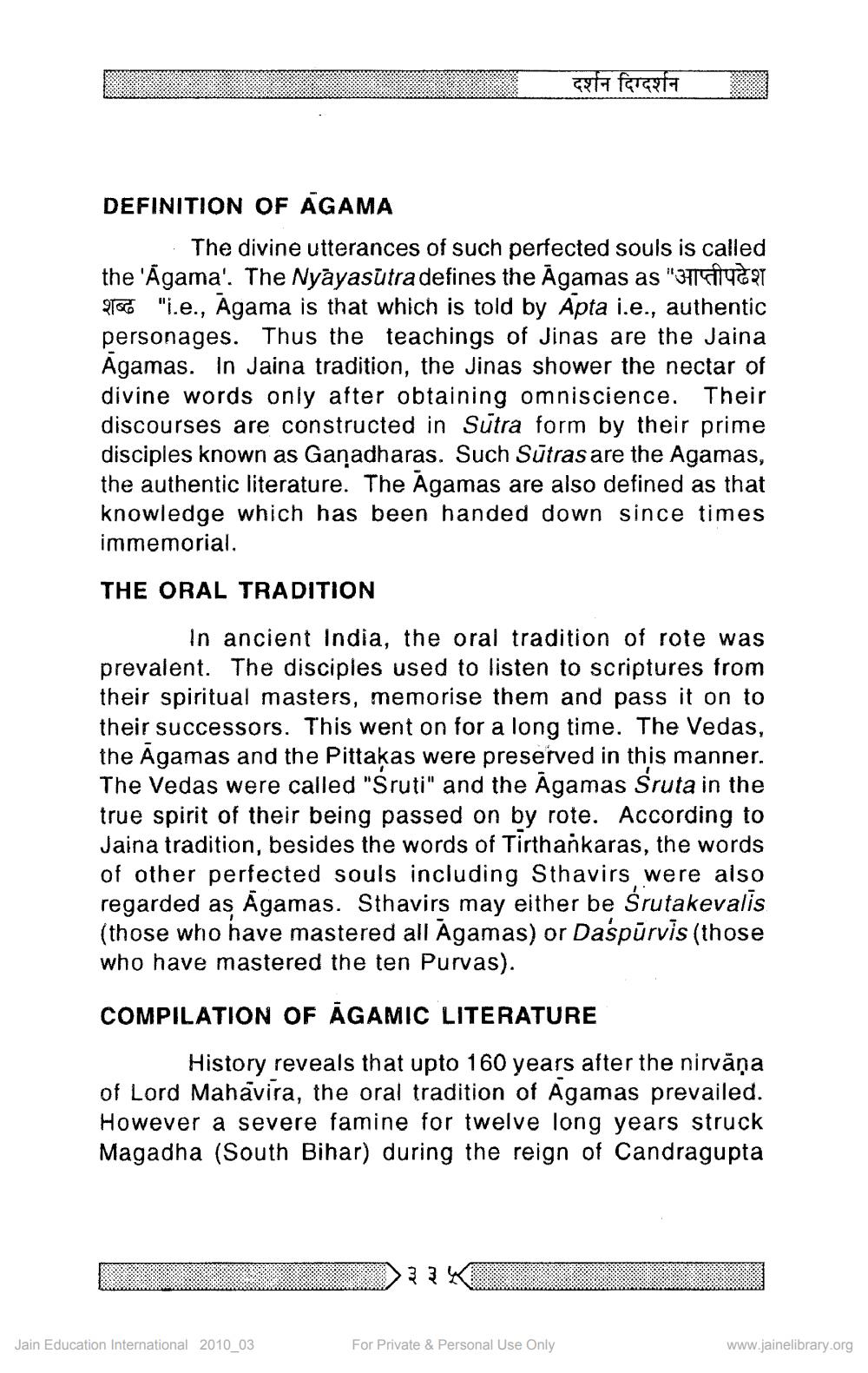Book Title: Jaina Agamic Literature importance of Right Knowledge Author(s): Dulichand Jain Publisher: Z_Mohanlal_Banthiya_Smruti_Granth_012059.pdf View full book textPage 2
________________ DEFINITION OF AGAMA The divine utterances of such perfected souls is called the 'Agama'. The Nyayasutra defines the Āgamas as "ATTA "i.e., Agama is that which is told by Apta i.e., authentic personages. Thus the teachings of Jinas are the Jaina Āgamas. In Jaina tradition, the Jinas shower the nectar of divine words only after obtaining omniscience. Their discourses are constructed in Sutra form by their prime disciples known as Gaṇadharas. Such Sūtras are the Agamas, the authentic literature. The Agamas are also defined as that knowledge which has been handed down since times immemorial. THE ORAL TRADITION In ancient India, the oral tradition of rote was prevalent. The disciples used to listen to scriptures from their spiritual masters, memorise them and pass it on to their successors. This went on for a long time. The Vedas, the Agamas and the Pittaķas were preserved in this manner. The Vedas were called "Śruti" and the Agamas Śruta in the true spirit of their being passed on by rote. According to Jaina tradition, besides the words of Tirthankaras, the words of other perfected souls including Sthavirs were also regarded as Agamas. Sthavirs may either be Śrutakevalis (those who have mastered all Agamas) or Daspūrvis (those who have mastered the ten Purvas). COMPILATION OF AGAMIC LITERATURE History reveals that upto 160 years after the nirvāņa of Lord Mahavira, the oral tradition of Agamas prevailed. However a severe famine for twelve long years struck Magadha (South Bihar) during the reign of Candragupta Jain Education International 2010_03 दर्शन दिग्दर्शन ३३५ For Private & Personal Use Only www.jainelibrary.orgPage Navigation
1 2 3 4 5 6 7 8 9 10 11 12 13 14 15 16 17
